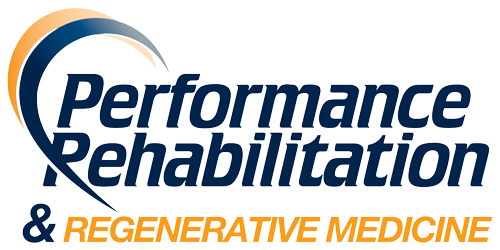Recovery From Addiction Talmo GA
Home
Recovery From Addiction Talmo GA Info
Recovery From Addiction Talmo GA
These programs typically offer a sliding-fee scale that charges according to what a person can pay. Addicts can be more manipulative and cunning in their drug seeking behavior than you would like to believe your child capable of.
They may lose everything they have and cause irreparable havoc from their drug use. We help them to mend the damaged and broken relationships that have resulted from their chemical dependency. Many musicians have stated that—having found sobriety—songs that came together during their drug days are less meaningful to them and are often a source of embarrassment. Others provide alternative options, such as the SMART recovery program. On the reverse, you should expect to get the same, if not higher treatment than that which is provided in nonreligious facilities.
Right here are Some Even more Info on Best Drug Rehab

More Info About Stopping Zopiclone Addiction Recovery Talmo GA
Understanding the right way to take care of yourself is an essential aspect to staying clean and off of drugs for good. Treatment can occur in a variety of settings, take many different forms, and last for different lengths of time. Addiction can also apply to alcohol: essentially a drug in liquid form. Proposed models of affect-driven tobacco use have focused on negative reinforcement as the primary driving force for addiction; according to such theories, tobacco is used because it helps one escape from the undesirable effects of nicotine withdrawal or other negative moods.[38] Acceptance and commitment therapy (ACT), is showing evidence that it is effective in treating substance abuse, including the treatment of poly-substance abuse and cigarette smoking.[39][40] Mindfulness programs that encourage patients to be aware of their own experiences in the present moment and of emotions that arise from thoughts, appear to prevent impulsive/compulsive responses.[38][41] Research also indicates that mindfulness programs can reduce the consumption of substances such as alcohol, cocaine, amphetamines, marijuana, cigarettes and opiates.[41][42][43] Behavioral models[edit] Behavioral models make use of principles of functional analysis of drinking behavior. The length is based solely upon providers' experience in the 1940s that clients needed about one week to get over the physical changes, another week to understand the program, and another week or two to become stable.[18] 70 to 80 percent of American residential alcohol treatment programs provide 12-step support services. Chris Christie: New Day, drug addiction is a disease.
Right here are Some More Resources on Opiate Rehab
Whether true addiction ever occurs in animals is doubtful. Addiction can rot out the support beams of your love of Christ and leave you close to collapse. Treatment methods may vary between individuals, and multiple treatment courses may be required to achieve success. If you’re worried that a friend or loved one might be abusing drugs, look for the following warning signs: Physical warning signs of drug abuse or addiction Bloodshot eyes, pupils larger or smaller than usual Changes in appetite or sleep patterns Sudden weight loss or weight gain Deterioration of physical appearance, personal grooming habits Unusual smells on breath, body, or clothing Tremors, slurred speech, or impaired coordination Behavioral warning signs of drug abuse or addiction Drop in attendance and performance at work or school Unexplained financial problems; borrowing or stealing Engaging in secretive or suspicious behaviors Sudden change in friends, favorite hangouts, and hobbies Frequently getting into trouble (fights, accidents, illegal activities) Psychological warning signs of drug abuse or addiction Unexplained change in personality or attitude Sudden mood swings, irritability, or angry outbursts Periods of unusual hyperactivity, agitation, or giddiness Lack of motivation; appears lethargic or "spaced out" Appears fearful, anxious, or paranoid Warning signs of commonly abused drugs Marijuana: Glassy, red eyes; loud talking, inappropriate laughter followed by sleepiness; loss of interest, motivation; weight gain or loss.
Right here are Some More Resources on Stopping Zopiclone Addiction Recovery Talmo GA
Also see Self-Test for Teenagers. (National Council on Alcoholism and Drug Dependence of the San Fernando Valley) Misuse of Prescription Drugs – Government guide to the growing problem of nonmedical use or abuse of prescription drugs. (National Institute on Drug Abuse) Prescription drug abuse – Causes, risk factors and treatment for commonly abused prescription drugs. (Mayo Clinic) The problem with prescription painkillers – Examines the opioid painkiller epidemic and how people using prescription painkillers can reduce the risk of abuse and overdose. (Harvard Health Blog) Opioids – Overview and links to resources. (National Institute on Drug Abuse) Drugs: What to Know– Straightforward talk on drug and alcohol abuse for teens. (Nemours Foundation) Seeking Drug Abuse Treatment: Know What to Ask – Helpful guide to the questions you should ask when searching for the right treatment for a drug problem. (National Institute on Drug Abuse) Finding help Behavioral Health Treatment Services Locator – National search engine for treatment program throughout the United States and U. Fostering client autonomy in addiction rehabilitative practice: The role of therapeutic 'presence'. They opt for taking or trying drugs, so that they can fitin with the crowd. If you are still unsure, or need professional advice as how to help your loved one get the correct treatment, please call us and we will do all we can to help.
Click Here for More Information
Previous Next
You may also like:
Kapanol Detox Centers Ozona TX
Symtan Addiction Detox Clinics Bay City MI
Amytal Rehab Program Havana ND
Mdma Addiction Clinics Otis CO
Dual Diagnosis Intensive Outpatient Program Bremen AL
Hycodan Addiction Canaan VT
Mescaline Addiction Program Felton MN
Ativan Rehab Treatment Facilities Marion MT
Ecstasy Addiction Treatment Clinics Mooers NY
Codeine Detox Treatment Center Brooklyn KY
Morphine Abuse Programs Copper City MI
Dextroamphetamine Addiction Clinics East Palestine OH
Ghb Rehab Destrehan LA
Amphetamine Detox Treatment Programs Woodson IL
Alprazolam Detox Treatment Bryn Athyn PA
Zolpidem Detox Clinics Abingdon MD
Zydone Rehab Treatment Program Sweet Briar VA
Focalin Rehab Facility Near Me Los Alamitos CA
Percodan Abuse Clinic Bruneau ID
Methylphenidate Detox Treatment Programs Arboles CO